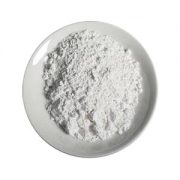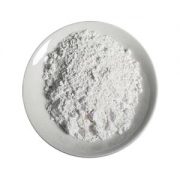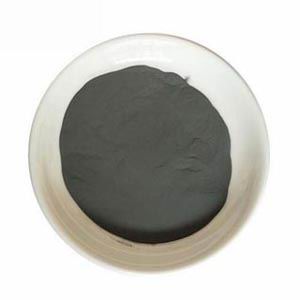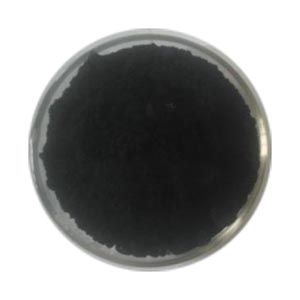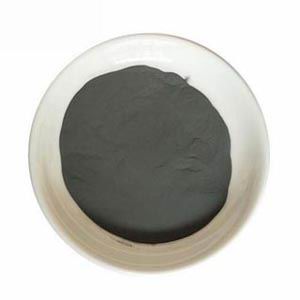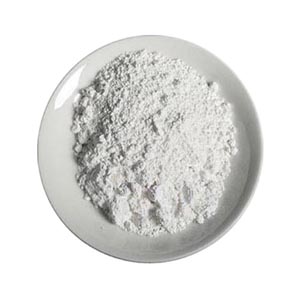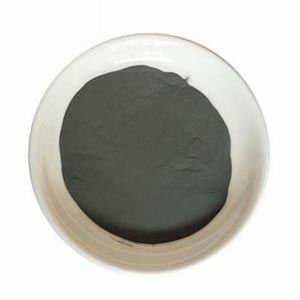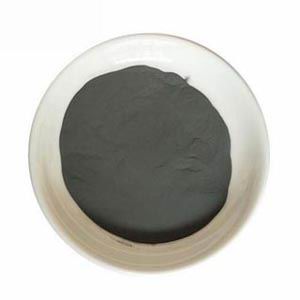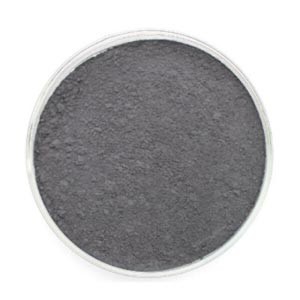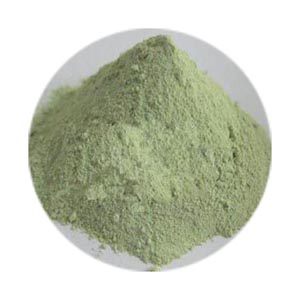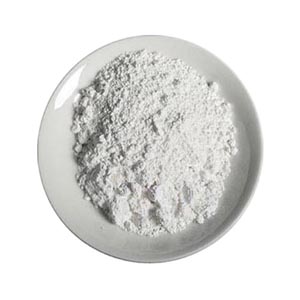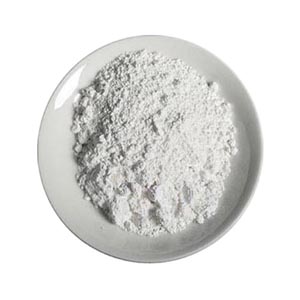
Tantalum pentachloride
Other name: Tantalic Chloride, Tantalum(V) chloride, Tantalumchlorideanhydrous
CAS no. : 7721-01-9
EINECS no. : 231-755-6
Molecular formula: Cl5Ta
Molecular weight: 358.2145
Melting point: 221-235 ℃
Relative density :3.682
- 描述
- Inquiry
Purity: ≥99.9%
Appearance: light yellow or white powder
Packaging: 1kg or 10kg each packing.
Application:
ferroelectric film, organic chlorination agent, tantalum oxide coating, preparation of high CV tantalum powder, etc.
On the surface of electronic components, the surface of semiconductor devices, the surface of titanium and metal nitride electrodes, and the surface of metal tungsten, an insulating film with a thickness of 0.1 mm and a high dielectric rate is formed.
In the chlor-alkali industry electrolytic copper foil, oxygen industry recycling electrolytic anode surface and waste water industry mixed with ruthenium compounds and platinum compounds to form oxide conductive film, improve film adhesion, extend the service life of electrode for more than 5 years.
Preparation of ultrafine tantalum pentoxide
Tantalic Chloride It can be sublimated in carbon dioxide or dry chlorine gas. Soluble in anhydrous ethanol, chloroform, carbon tetrachloride and potassium hydroxide, insoluble in sulfuric acid. Decomposition into tantalic acid in moist air or water by heating a mixture of tantalum pentoxide and carbon in chlorine. Should be kept sealed. Application: intermediate of optical glass, metal tantalum and tantalum carbide.
Structure
TaCl5 crystallized in monoclinic space group C2/m. Ten chlorine atoms define a pair of octahedrons with Shared edges. Tantalum atoms occupy the center of the octahedron and are connected by two chlorine Bridges ligands. The dimer structure remains in the noncomplex solvent and remains in the melting state to a great extent. However, in the steam state, TaCl5 is monomer. The monomer is triangulated and biconical, such as PCl5.
Related information:
The synthesis process
Five tantalum chloride can make metal tantalum powder and chlorine in response to the preparation of between 170-250 ℃. The reaction can also use 400 ℃ of HCl.
2 ta + 5 tacl5 cl2 – > 2
Ta + 10 HCL – > 2 tacl5 + 5 h2
It can also be spread by tantalum pentoxide and thionyl chloride reaction to the preparation of under 240 ℃
Ta2O5 + 5 tacl5 socl2 – > 2 + 5 so2
Tantalum pentachloride is commercially available, but the sample may be contaminated with ta (V) chloride oxide (TaOCl3) resulting from hydrolysis
Tantalum pentachloride prepared by hydrogen reduction
At above 600 ℃ temperature, hydrogen can be restored tantalum pentachloride for the corresponding metal. There are many methods for reducing tantalum, such as depositing tantalum from gas phase to make compact metal on the heated substrate, or reducing tantalum chloride by hydrogen in the fluidized bed to make spherical tantalum powder. A more promising approach is to reduce TaCI5 with hydrogen plasma to produce high purity tantalum powder or coating. The ultrafine metal powder produced by reducing TaCl5 with hydrogen can be used to produce high specific capacitance electrolytic capacitor.
Below for under 1200 ~ 1400 ℃ with hydrogen reduction TaCl5 steam tantalum deposition in tantalum on a device. Will TaCl5 steam with H2 mixture into the reactor, the reactor center a tantalum belt, direct current will toggle metal heating to 1200 ~ 1500 ℃. The following reaction is performed on the surface of the heated tantalum metal strip:
2 tacl5 h2 + 5 = 2 ta + 10 HCL
Tantalum in tantalum metal band on the best deposition conditions for: tantalum temperature 1200 ~ 1300 ℃, TaCI5 concentration in the gas mixture is about 0.2% (volume). The deposition rate of tantalum is 2.5~3.6g/cm2·h. The tantalum strips obtained by deposition can be rolled directly into plates, remelted in electron beam furnace, or produced by hydrogenation, crushing, dehydrogenation and other processes. Metallic tantalum powder. Under such conditions, the reduction rate of chloride is 20~30%, and unreacted TaCl5 vapors can be reused after condensation.
Tantalum pentachloride was reduced in the hydrogen plasma flame, and the reaction temperature could be as high as 2000~5000K, and the metallic tantalum powder with particle size of 1~10 m could be obtained. Tantalum powder is a promising method to produce tantalum powder because of its moth-like shape, smooth surface, high purity, good electrical properties, poor fire resistance and recovery rate of over 90%.
相关产品
-
Tantalum diboride
Other name: tantalum boride (1:2)
CAS no. : 12007-35-1
EINECS no. : 234-234-5
Molecular formula: B2Ta.
Molecular weight: 202.572
-
Niobium diselenide
Other name: Niobium(IV) selenide, Niobium selenide; Columbium selenide; diselenoxoniobium; niobium(+4) cation; selenium(-2) anion
CAS no. : 12034-77-4
EINECS no. : 234-811-8
Formula: NbSe2.
Molecular weight: 250.8264.
Density (g/mL,25) : 6.3
-
Tantalum silicide
CAS no. : 12039-79-1
EINECS no. : 234-902-2
Molecular formula: H6Si2Ta.
Molecular weight: 243.16654
-
Zirconium acetylacetonate
Other name: Zirconium-2,4-pentanedionate, Zirconium(IV)acetylacetonate; Tetrakis(acetylacetonato)zirconium(IV); 2,4-pentanedione,zrderiv.; acetyl-zirconiuacetonate; nasemuzirconium; orgatixzc150; pentane-2,4-dione-zirconium (4:1);
CAS no. : 17501-44-9
EINECS no. : 241-241-5
Molecular formula: C20H28 Zr O8
Molecular weight: 487.6555.
Melting point: 171-173℃
-
Tungsten silicide
Other name: Tungsten disilicide
CAS no. : 12039-88-2
EINECS no. : 234-909-0
Formula: Si2W.
Molecular weight: 240.011
Density: 9.40 g/cm3
Melting point: 2165 C.
-
Tantalum nitride
Performance characteristics: high purity, no impurity phase detected by XRD
Tantalum nitride (TaN) has superior physical, chemical and mechanical properties (such as high hardness, wear resistance, chemical inertness, thermal stability and low resistance temperature coefficient), and is widely used in wear-resistant coatings, film resistors and diffusion barriers in integrated circuits -
Molybdenum disilicide
Other name: Molybdenum silicide
Molecular formula: MoSi2
CAS number: 12136-78-6
Molecular weight: 152.11
Melting point: 2030 ° C
Density: 6.24g/cm3 -
Zirconium tungstate
Other name:
Tungsten zirconium oxide ; Ditungsten zirconium octaoxide
CAS no. : 16853-74-0
EINECS no. : 240-876-3
Molecular formula: Zr(WO4)2
Molecular weight: 586.8992.
-
Niobium metaphosphate
English name: Niobium metaphosphate
Chemical formula: Nb (PO3) 5
Molecular weight: 487.90
Properties: sodium biphosphate glass, white powder, insoluble in water, PH value: 3.8
-
Vanadate zirconium
Molecular formula: ZrV2O7.
Molecular weight: 315.7.
CAS no. : 13981-20-9
Appearance: yellow powder
Used in functional ceramics, structural ceramics and other aspects as pigments.
Description: The use of temperature: 400-1080 ℃
The coefficient of linear expansion: – 10 x 10-6 ℃ – 1

